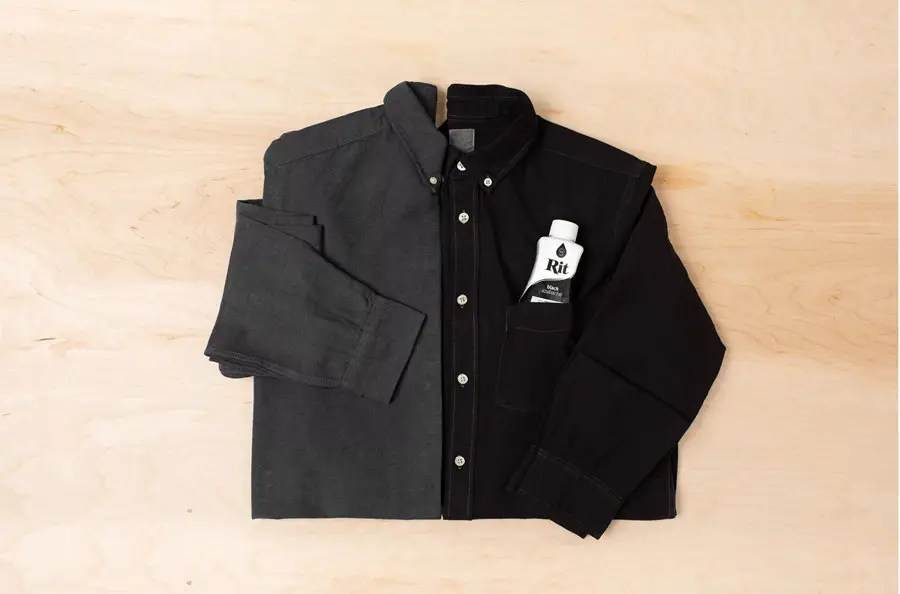
Do you like a dramatic, black upgrade to a few worn-out t-shirts or affordable black jeans to go with a new goth wardrobe? Perhaps you want to buy a nice outfit to attend a funeral? In either case, there are a few straightforward ways you can learn to color your garments black!
This post will explain 10 effective ways for dying clothes black using both commercial and homemade dyes. You’ll learn the ways for permanently dying clothes black. Last but not least, you’ll discover tips on the top black dyes.
Table of Contents
Is it Possible to Dye Clothes Black?
We’ll provide you an unambiguous response: Yes!
You can dye your clothing black no matter what color it is right now. Which color it is—white or pink—won’t really matter. You can also dye black-colored cloth, such as your favorite pair of black jeans or a worn dress.
Know Your Fabrics First, before anything else
It’s important that you familiarize yourself with your clothes fibers before beginning to learn how to dye clothing black. Although it may sound trite, not all fabrics are created equal. Every kind has unique attributes and qualities.
Nevertheless, not every fabric responds to dye in the same manner. To properly manage the fabric when you dye it black, you must be aware of the type of fabric you are working with.
- Cotton:Take a chance. Be the best tie-dye you can be.
- Nylon or Rayon:These synthetic materials, which happen to be quite porous and have a propensity to take dye well, are nylon or rayon. They won’t shrink either.
- Silk:Silk takes colors well but has a propensity to pull, shrink, and lose its sheen as a result.
- Linen:Linen also takes colors well, however there could be some shrinkage.
- Wool:Wool can take color perfectly fine, although there may be severe pilling and shrinking.
- Polyester and Acetate:Because they must be processed above the boiling point at 280 degrees, polyester and acetate are the hardest fabrics to color. Dark or vivid colors cannot be produced on certain fibers by a home dyer. Without having machinery that can withstand those high temperatures, they won’t turn black, neon, and it’s impossible.
It’s important to avoid choosing fabrics that are water resistant or repellent when dyeing them because there is no chance of the dye really clinging to those fabrics.
How to Dye Clothes Black?
When a piece of clothing is clean and ready to be dyed, you have a variety of options for dying it black, such as using a hot dye bath on the stove or your washing machine.
10 Ways to Dye Clothes Black
1. In the Washing Machine
The washing machine is the simplest method for dying clothing black. This technique does not require you to carry about heavy, wet garments or stand over a pot of boiling water!
Putting dye in your washing machine has the drawback of staining the interior walls of the appliance. The color may bleed onto other garments the following time you wash your clothes if you don’t clean your machine after the dyeing procedure.
Be sure to read the instructions on your dye packet because some fabrics won’t become colorfast unless you heat-set them using the stovetop method.
Steps to follow:
- To clean your apparel, put it through a warm water, detergent cycle in the washer.
- Next, put the moist clothing aside and get the machine ready. If you have the option, use the warmest water you can and run the wash cycle for a long time.
- To measure out the proper amount of dye for your garment, refer to the instructions on the dye packet.
- In four cups of extremely hot water, combine that color.
- Add four cups of hot water and one cup of table salt.
- Start the wash cycle after adding the cloth.
- Pour the salt dissolved in water first, then the dye dissolved in water if your machine has a detergent chute. (If not, simply place these in the main basin before beginning the wash cycle.)
- After the cycle is finished, rinse the item and then wash it by itself in the washer with a mild detergent to ensure the color doesn’t fade.
2. Over the Stovetop
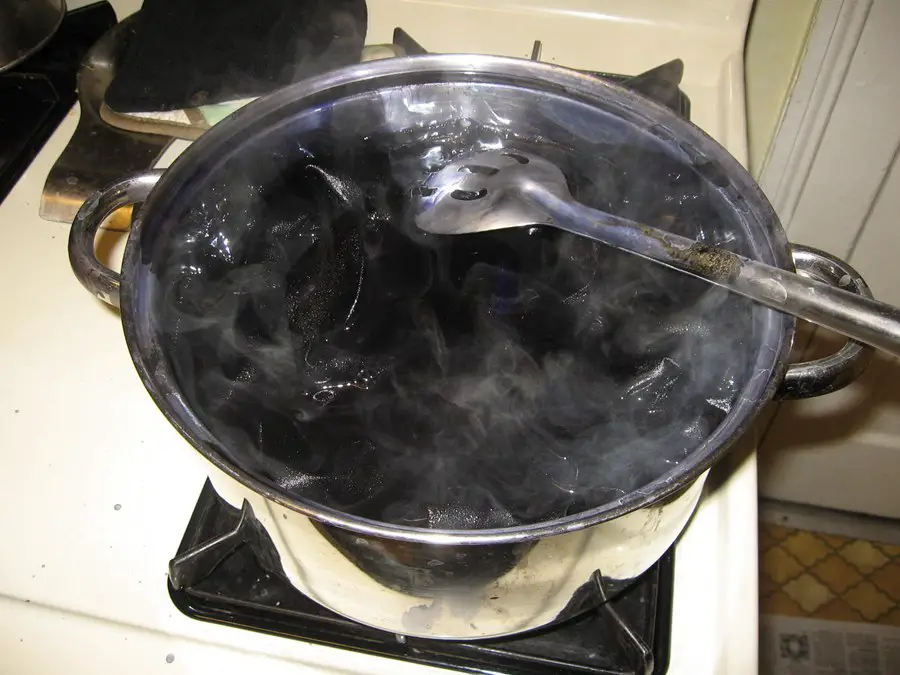
High heat in a boiling dye bath is frequently the best technique to permanently fix black dye into fabric. Stovetop cooking is a viable option for this!
This process will need to be slightly modified for each type of dye. Disperse dyes, for instance, frequently require extra chemicals like synthrapol.
But the fundamental idea is the same. On the stovetop, preheat a sizable pot of water and bring it to a boil. The clothing is added along with the dye and maybe additional chemicals.
Depending on the type of dye you use and the fabric used in your outfit, steeping times can vary. The important thing, however, is that the garment and colouring agent both need to soak in the boiling water.
Later on in this section, you’ll find detailed instructions for using RIT and Disperse dyes on the stove!
3. Rit Black Dye
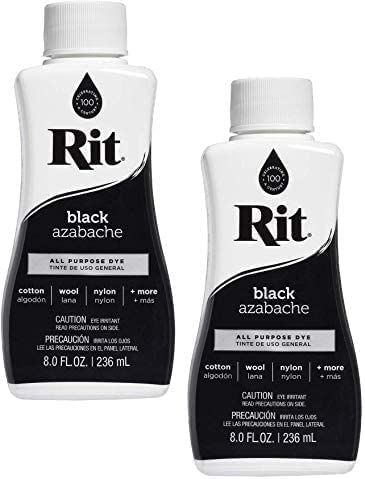
If you want to dye clothing a true black, the RIT company advises making a few adjustments to the directions for their products. These modifications are available here!
Check the label on the inside of the clothing before you start to see what kind of fabric is used. On cotton, regular RIT dye performs best. The company also offers Rit DYEMore as a substitute; it may be used on polyester.
Additionally, you can use this type of dye for the washing machine method or in a regular bucket of water. However, as you will see, RIT advises using hot water for the best outcomes when using black dye.
Steps to follow:
- The garment should first be washed, while you are not required to dry it. Clean fabric is always the best for dyeing!
- Find a really large pot that can easily hold both your garments and several gallons of water at once. Put the pot on the stovetop over high heat with half a cup of water in it.
- Water should be heated until it starts to boil. When this occurs, foamy bubbles will appear on the water’s surface.
- Read the guidelines on the package, but remember to add this important modification: use twice as much dye as is advised. Typically, this entails using an entire bottle of dye on each piece of clothes.
- Add one cup of table salt to the water after the dye has been added to colour a cotton garment black. For wool or silk, substitute one cup of white vinegar.
- Add the garment next. For at least 30 minutes, you should keep it in boiling water while stirring often with a long spoon.
- After you’ve finished the dying procedure, RIT recommends doing an additional step called a color stay fixative. The clothing must be soaked in this solution before being washed in the washing machine.
4. Procion Dye
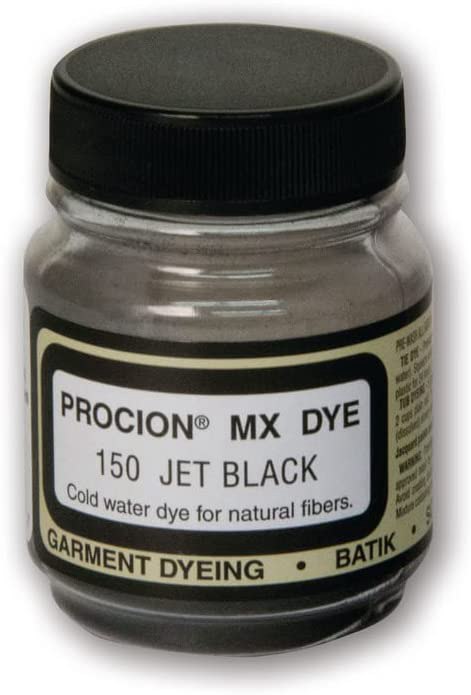
With cellulose fibres, Procion reactive dyes perform best and can chemically attach to the cloth without the use of heat. This type of coloring chemical fixes inside the fabric’s fibers rather than just on the surface, producing a more lasting color!
Procion reactive dyes can occasionally be used on fabrics made from animals, such as silk or wool, but you’re usually going to find it simpler to utilize acid dyes on those kinds of fabrics.
Steps to follow:
- Begin by weighing your clothing. Note the weight of the garment in gram.
- Use your washing machine to wash the item. You can wash it in the same load as other clothes. Make sure to remove it from the dryer moist rather than dry it.
- The dye bath will then be set up. To do this, you’ll need to do some math: for every 100 grams of weight in your clothing measurement, you’ll need two liters of water. As a result, your tub or basin will need six liters of water if your pair of jeans weights 300 grams.
- You must salt the water in addition to the color.
- Add your soaked clothes gently to this mixture. Give it a 30-minute soak.
- Then, you must include one more vital component called as a fixer. Often, this will come with the dye, but if you’d rather, you may also purchase soda ash and use it.
- The fixer should be weighed, then stirred into a small cup of hot water before being added to the solution.
- Give the dye bath 45 minutes to sit.
- Rinse the clothing thoroughly in cold water until no color is visible coming off in the water.
- Wash the item alone in your washing machine with hot water to ensure the color has fully bonded to the cloth.
5. Hair Dye
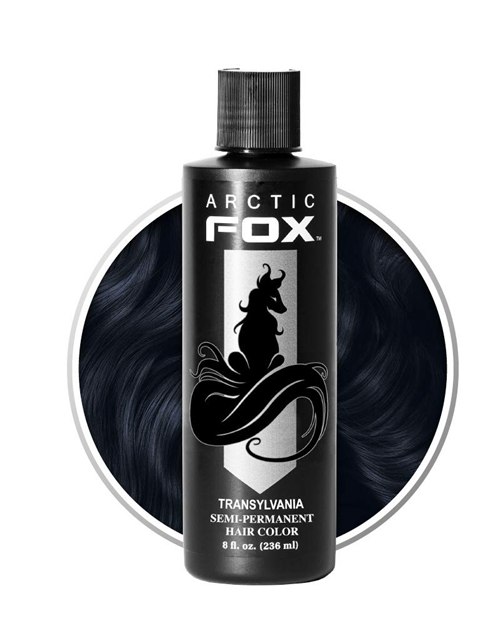
Here’s the thing: hair dye works well for dying black clothing, like pants. However, hair dye frequently costs far more than fabric dye. Additionally, fabric dyes are more effective than hair color since you may choose specific products for every particular type of fabric.
Even if you don’t have any black hair dye lying around, you might want to give this technique a shot! It’s quite easy.
Steps to follow:
- To make a simmering dye bath, use a stovetop. To do this, heat up a pot of water.
- Make sure the water is thoroughly mixed before adding the hair dye.
- The garment is then added. At least one hour should pass while it simmers. You can leave the dye bath alone for the night after turning off the heat.
- Check to see if the color remained by rinsing the item in cold water. If it did, be careful to wash the item by itself for the first time in your washing machine!
6. With Coffee
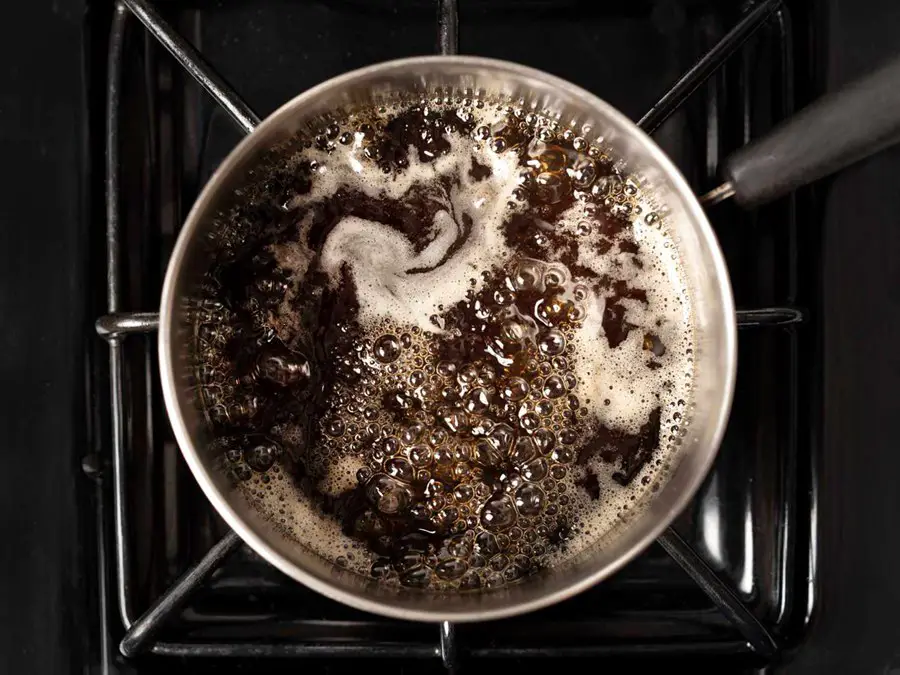
Try dying your clothes black with coffee if you don’t like using powerful chemicals!
In all honesty, utilizing coffee might not produce a real, deep black for your clothing. Dark brown hues are more likely to appear in a variety of tones. But the method is affordable, enjoyable, and worth a shot!
Steps to follow:
- You’ll need enough strong dark coffee to filled a big pot two-thirds of the way.
- To boil the coffee in the pot.
- To prevent air pockets from forming in the cloth, swirl the garment with a long spoon when adding it to the hot coffee.
- Allow the fabric too steep in the pot of hot, dark coffee after reducing the heat to a low simmer. The color will become darker the longer it sits!
- Remove your clothing from the coffee once it seems sufficiently dark and rinse it under cool running water.
- This shirt should never be washed in the washing machine since coffee “dye” is not colorfast. Instead, delicately wash it by hand all by yourself to prevent the coffee from staining anything.
7. Disperse Dye
Disperse dyes can’t be dissolved in water, so they’re useless for dying natural fabrics, but they work wonders on polyester!
You will need to use a modified stovetop method because disperse dyes frequently involve a significant amount of heat in the production process. The only way to successfully blacken polyester clothing at home is to do it this way, which is a little riskier and messier than washing it in your washing machine.
Steps to follow:
- Your polyester clothing needs to be washed first. Consider using half a teaspoon of soda ash and synthrapol for optimal results.
- You should use 6 tablespoons of the dye to produce a deep black, if possible.
- If the color is powdered, dissolve it in a cup of hot water, then allow the mixture to cool. Using a fine sieve or a piece of nylon stocking, sift the mixture after it has cooled. You can omit this step if the substance is liquid.
- Occasionally, a separate “dye carrier” product will be sent with your dye. That needs to be dissolved in a second cup of boiling water before being allowed to cool.
- You can begin the dye bath now that your materials are prepared!
- Put a large metal saucepan on the stovetop and fill it with two liters of water.
- In the boiling water, add one more half teaspoon of synthrapol. Eleven teaspoons of White vinegar. Add the dye and dye carrier last.
- Put your pre-washed, moist polyester item in the pot.
- Turn on the stove and slowly and continuously whisk the water while you bring it to a boil.
- After that, you can finally rinse the cloth in the sink with running water! Allow it to dry, preferably by hanging it outside.
8. Natural Ingredients
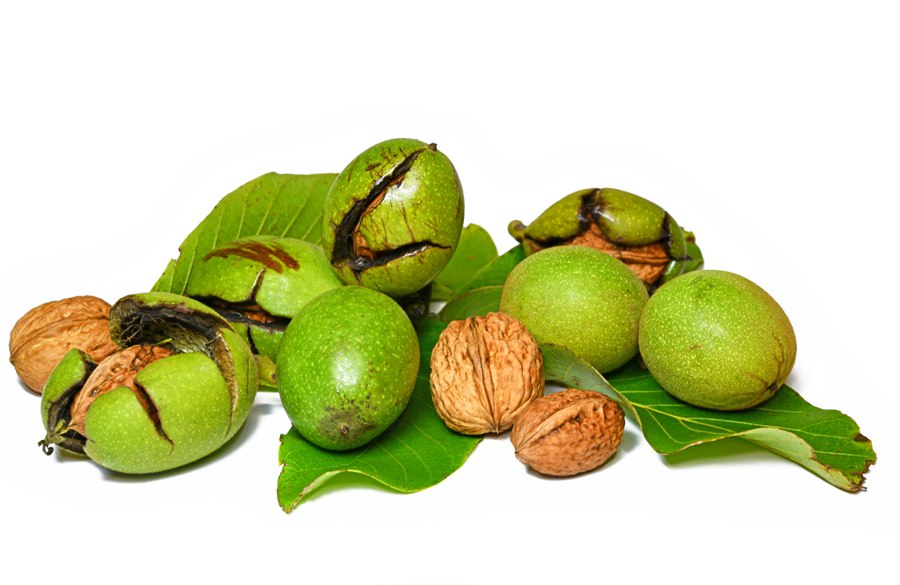
Walnuts are a source of one of the most popular all-natural black dyes. However, you cannot use the kind from the supermarket; instead, you must locate a walnut tree nearby and obtain permission to gather a bag full of the nuts that have fallen from the tree.
Although it can be used on cotton or plant-based fabrics, walnut dye frequently works best on textiles made of animal fibers.
Steps to follow:
- Use a hammer or nutcrackers to crack the walnut shells. Put everything in a big mesh bag.
- Put the sack in a big pot and cover the walnuts with water.
- Bring the saucepan of water to a boil on the burner.
- Simmer the water for an hour with the heat reduced until it maintains a low simmer.
- Let the water cool before filtering it through muslin or cheesecloth to remove any remaining shell fragments.
- Then add your clothing after adding the dye back to the pot and bringing it to a boil. Give it another 30 minutes to simmer.
9. Household products
Making dye from everyday materials like screws and nails is one of the most daring methods to dye your garments! A lot of acorns are also required for this procedure to balance out the iron.
Steps to follow:
- A cup or so of old, rusted nails, screws, nuts, or bolts are your first requirement.
- To a glass jar with a tight-fitting lid, add the nails, one cup of white vinegar, and two cups of water.
- For two weeks, leave the nail jar outside. At that stage, it ought to appear yellow or orange.
- In a bowl big enough to hold your clothing, pour the “nail water.”
- A large pot should be filled with five pounds of acorns and enough water to cover them. Spend an hour simmering this over low heat.
- Spend about 45 minutes soaking your clothing in the acorn water.
- Once your clothing is dark enough, rinse it in cold water and let it air dry.
10. Iris roots
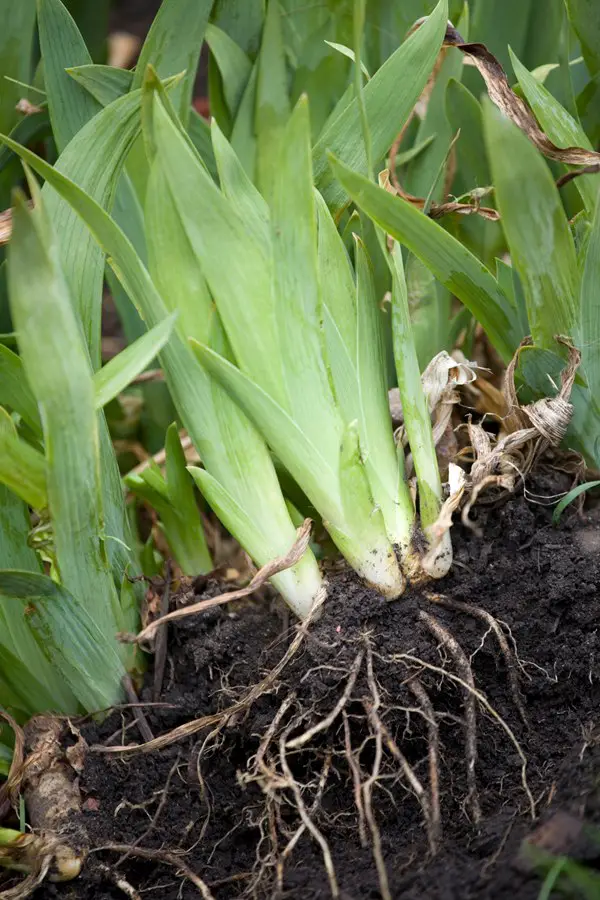
You may create a natural black dye from iris roots for dying you clothes black naturally.
Steps to follow:
- In a pot, combine 1-part vinegar with 4 parts water, and add the fabric you want to die.
- Stirring sporadically throughout the hour-long simmering process.
- After that, rinse it in a sink filled with cool water for a minute or two to get rid of the last of the vinegar.
- In another pot, combine 1-part iris roots with 2 parts water. Add the wet fabric to the dye and boil for an hour.
- Let the fabric soak in the dye all night if you want it to be very black.
- Then, wash your cloth in cool water with a moderate detergent before drying it in the dryer or hanging it outside.
Wrapping UP!
We hope that these 10 ways for dyeing black clothing are helpful to you. There are a variety of ways to dye clothing, from soaking it in strong coffee to using sophisticated synthetic dyes and hot water! It’s crucial to choose the proper coloring agent before you start because different types of fabrics respond well to particular dyes.
Binance - rejestracja
Tuesday 23rd of April 2024
Can you be more specific about the content of your article? After reading it, I still have some doubts. Hope you can help me.
binance registration
Tuesday 12th of March 2024
I don't think the title of your article matches the content lol. Just kidding, mainly because I had some doubts after reading the article.
izveidot binance kontu
Thursday 7th of March 2024
Can you be more specific about the content of your article? After reading it, I still have some doubts. Hope you can help me.
Тркелу
Sunday 3rd of March 2024
Your point of view caught my eye and was very interesting. Thanks. I have a question for you. https://accounts.binance.com/kz/register-person?ref=S5H7X3LP
binance registrácia
Sunday 3rd of March 2024
I don't think the title of your article matches the content lol. Just kidding, mainly because I had some doubts after reading the article. https://www.binance.com/sk/join?ref=V2H9AFPY